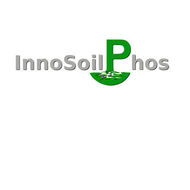The Binding of Phosphorus Species at Goethite: A Joint Experimental and Theoretical Study (2021)
Ganta P., Morshedizad M., Kühn O., Leinweber P., Ahmed A.
Minerals, 11 (3), 323
Abstract
Knowledge of the interaction between inorganic and organic phosphates with soil minerals is vital for improving soil P-fertility. To achieve an in-depth understanding, we combined adsorption experiments and hybrid ab initio molecular dynamics simulations to analyze the adsorption of common phosphates, i.e., orthophosphate (OP), glycerolphosphate (GP) and inositolhexaphosphate (IHP), onto the 100 surface plane of goethite. Experimental adsorption data per mol P-molecule basis fitted to the Freundlich model show the adsorption strength increases in the order GP < OP < IHP, and IHP adsorption being saturated faster followed by GP and OP. Modeling results show that OP and GP form stable monodentate (M) and binuclear bidentate (B) motifs, with B being more stable than M, whereas IHP forms stable M and 3M motifs. Interfacial water plays an important role through hydrogen bonds and proton transfers with OP/GP/IHP and goethite. It also controls the binding motifs of phosphates with goethite. Combining both experimental and modeling results, we propose that the B motif dominates for OP, whereas GP forms M and IHP forms a combination of M and 3M motifs. The joint approach plausibly explains why IHP is the predominant organically bound P form in soil. This study could be considered as a preliminary step for further studies for understanding the mechanisms of how microbes and plants overcome strong IHP–mineral binding to implement the phosphate groups into their metabolism.